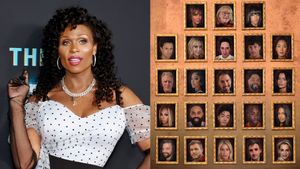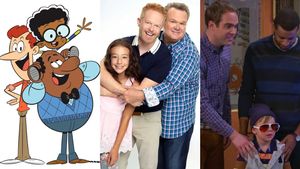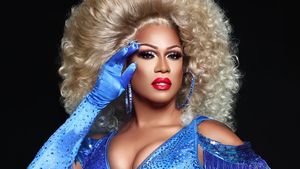There’s never been another show like Mad Men on TV. The drama debuted July 19, 2007 and it’s had many imitators but none to top it. Mad Men takes us back to that period of historical time as the 1950s were bleeding into the 1960s. In those days men were scotch-drinking, cigarette-smoking, skirt-chasing guys-guys and women were very much on the periphery of everything, adjuncts to men rather than persons in their own right. They were wives and mistresses, but never CEOs. The women of Mad Men have not receded into the shadows of that era, though. They stand out and stand up to the men. As Mad Men begins its final season, it’s 1969 and the country and Don Draper are at a crossroads. And the show that HBO and Showtime turned down, the show that has won more awards than any other show on cable except The Sopranos, is determined to go out with the same drama that caught viewers up from the very first episode. Cue that famous Hitchcock-ian title sequence and the mood music and settle down for a grabber of a season – on Sundays on AMC.
5. Award Winning Ad Game
After six seasons of awards and critical acclaim few other series have matched, Mad Men is drawing to a close. Mad Men creator Matthew Weiner has nine Primetime Emmy Awards–three for his work on HBO’s The Sopranos and six for Mad Men. He did what no one said cable could do–take home the statues. Mad Men won the Emmy for Outstanding Drama in 2008, 2009, 2010 and 2011 and 2014 is destined for more greatness. Mad Men is a stylish, social barometer of the era with not just office politics but national politics in play.
4. This Is a Hierarchy
So said Ken Cosgrove (Aaron Staton) in season one. Don Draper (Jon Hamm) has always been a star. No more. As he would have said in season one: What the hell happened? Draper had status, position. He was a rising star in the ad game–not just at Sterling Cooper Draper Pryce, but in the industry. He was known. He had a hot mistress and an equally hot wife. The beautiful house and the good kids. Now he’s the one on the fringes...what the hell happened? Well, there was that thing about stolen identity...
3. Such a Pretty Wife You Got There
Betty Draper Francis (January Jones) may not be married to Don anymore, but she still has the heart of Mad Men. Jones evokes the stultifying period of suburban housewifery with élan and a touch of pathos. She went to Bryn Mawr, she’s smart, she was a model, she’s raising Don’s and her three kids ostensibly on her own. She wanted to break out, she even had an affair, but instead Betty just ended up in a second marriage with all the same accouterments of her life with Don, now with Henry. You can almost see her reaching for the Valium when we aren’t looking.
2. Get Me Some Coffee, Will You?
Joan Holloway (Christina Hendricks) has risen from office manager and head of the secretarial pool to being a partner SCDP. Joan knows more than almost anyone at SCDP, but she’s always fighting the entrenched sexism of her era. Every business meeting is fraught with cheap and sleazy come-ons. Joan is always that sexy redhead first and foremost. But that’s about to change.
1. The Other Woman
Peggy Olson (Elisabeth Moss) is like Don Draper’s female alter ego. They are the true couple of Mad Men. No one has worked as hard as Peggy to get where they are in the brutal ad game. Peggy toned down her looks to have men focus on her brains. She rose through the ranks. She did things she never expected to do. She didn’t get the wife in the suburbs raising her kids while she worked in Manhattan. Instead she accidentally got pregnant with Pete Campbell’s (Vincent Kartheiser) baby and gave it up for adoption. Now Peggy and Don are working together again, but can this "marriage" be saved?
Victoria A. Brownworth is an award-winning journalist, editor and writer. She has won the NLGJA and the Society of Professional Journalists awards, the Lambda Literary Award and has been nominated for the Pulitzer Prize. She is a regular contributor to The Advocate and SheWired, a blogger for Huffington Post and a contributing editor for Curve magazine, Curve digital and Lambda Literary Review. She is the author and editor of nearly 30 books including the award-winning Coming Out of Cancer: Writings from the Lesbian Cancer Epidemic and Restricted Access: Lesbians on Disability. Her collection, From Where We Sit: Black Writers Write Black Youth won the 2012 Moonbeam Award for Cultural/Historical Fiction. Her Y/A novel, Cutting will be published in fall 2014. @VABVOX






























































































 Cindy Ord/Getty Images
Cindy Ord/Getty Images

























